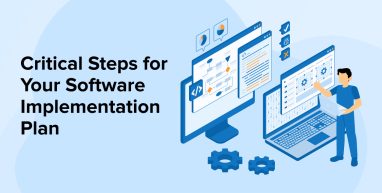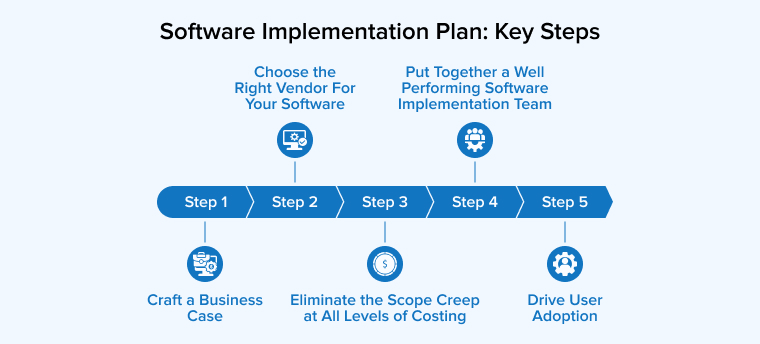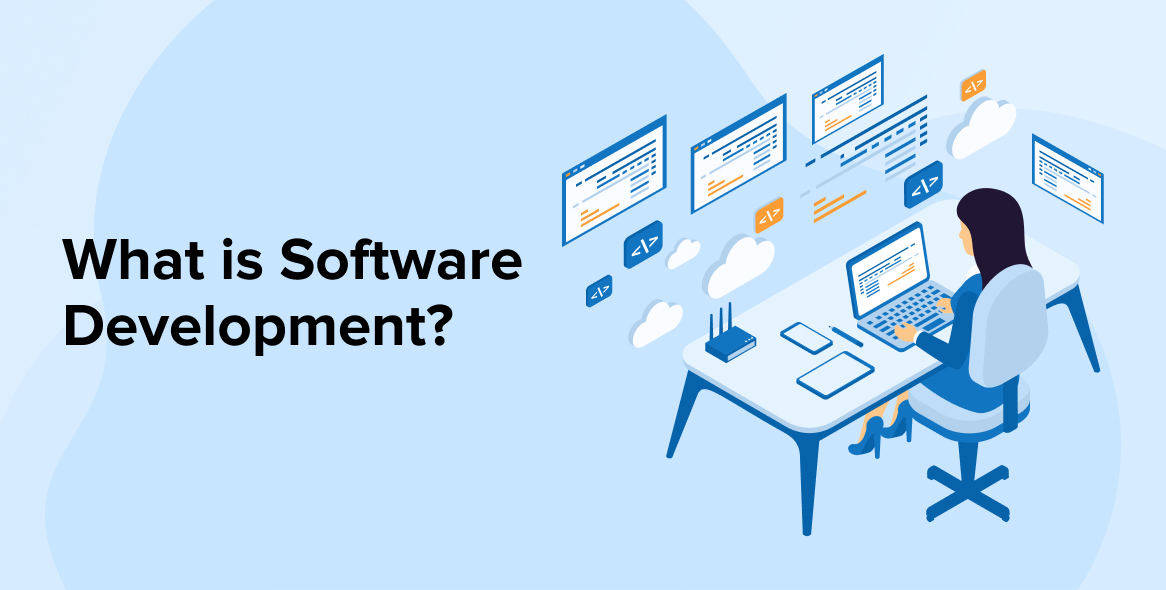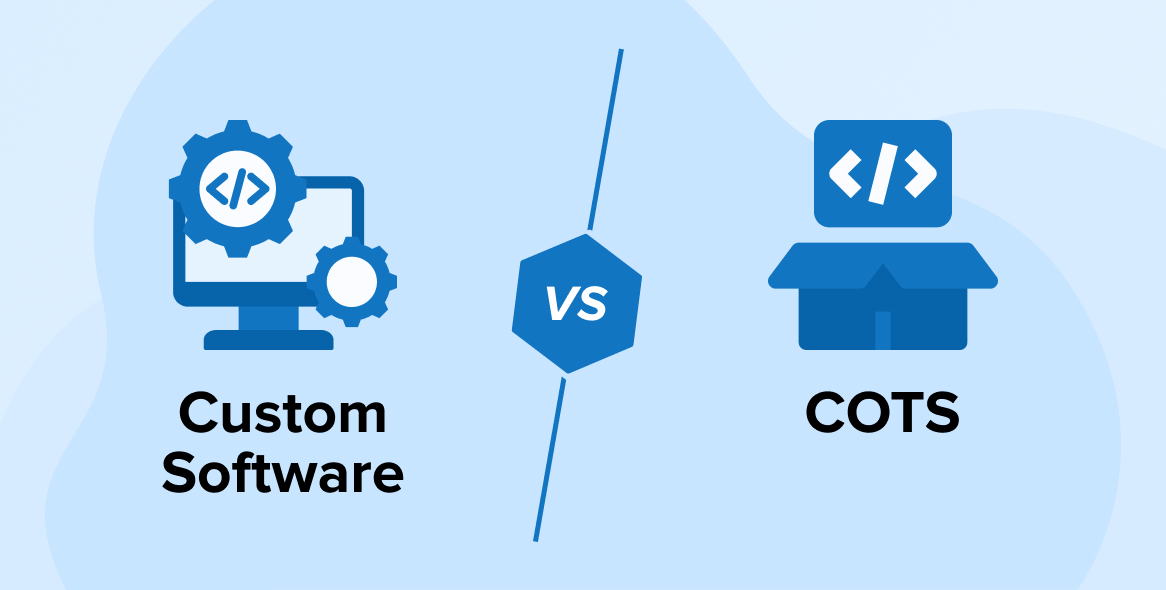
Every business in the market is competing with you in some or the other way to buy their products. This makes businesses from size to size compete with each other and make their way to success. One of the common ways to distinguish yourself from others is by implementing new software tools for your business which provide continuous improvement. These new software tools will make you stand apart from the other peers of the league by posing ways to improve productivity, amplify workflow, and make processes optimal. Hence, to do all of this, you need a strong software implementation process plan in action.
Finding the most suitable custom software development company for your unique business needs would require time and effort as well as in most circumstances a major financial investment.
Furthermore, you must have to make a systematic plan. Your team may be accustomed to doing things in a specific way, and if that method is working well for them, entirely changing their business processes may result in resistance to change. This article will help you to enlighten your business with specific ways of successful software implementation plans, how to plan it and how to execute the implementation plan seamlessly.
1. What is Software Implementation?
The term “software implementation” refers to the procedure of implementing and incorporating a software application into an organization’s processes and infrastructure. The term “enterprise applications” can refer to anything from a basic project management tool like Asana to a complex system like an ERP or supply chain management system. Updates and major improvements to software also fall under the purview of the implementation process.
While implementation may seem like an overwhelming process, it may really increase your business’s efficiency and bottom line. If you take on the task, you may find that you are far better off after a year than you would have been otherwise.
1.1 Benefits of Using a Software Implementation Plan
One of the most obvious benefits of adopting a software implementation strategy is that it facilitates the deployment of high-quality software that is tailored to your organization’s specific needs. Here are a few more of them:
- Realizes your long-term objectives without draining your resources in the process.
- The service guarantees that your firm has the right personnel involved at every step of the way in setting up the system and implementing any necessary changes.
- Ensure that your team meets its deadlines and stays within its financial constraints.
- Facilitates the establishment of transparent team roles and tasks that aid in the elimination of unnecessary repetition of effort.
- Reduces the need for prolonged deliberation.
- Assuring the company’s success in the long run.
2. Software Implementation Plan: Key Steps
Let’s have a look at the step-by-step process of software implementation.

Step 1. Craft a Business Case
In this process of developing a software implementation plan, your first approach should be to create a business case. There are strategies that need to be well executed and in less abstract terms. Not like those rash decisions you make with some technology that you need for business on an urgent basis.
This goes true for companies of all types and sizes. While smaller companies have more opportunities to pivot rapidly, they also have the most to lose. Since this network of business rarely moves as a single unified entity, which makes large organizations in most trouble with implementation. As a result, some departments and locations will eventually lag.
While you start to develop a business case, reach out to your intended users and solicit their feedback, regardless of who you are. Build your case around the most difficult activities by focusing on the pain points of intersection. When you build a business use case, have answers to questions like what do you stand to gain and what do you stand to lose? Is it possible to compare which one is more significant than the other?
When you develop a business case like this, you’re looking for a return on investment (ROI), which is a statistic. So, always create a business case that will have the software implementation project’s returns lower than others in the expectation list.
Step 2. Choose the Right Vendor for Your Software
As the next step in your software implementation strategy, your vendor plays a vital player. The level to which your vendor will support your implementation (and at what implementation cost ) varies but that doesn’t mean you shouldn’t try to get as much help as possible from them.
According to many researches that have been conducted in the past, getting the most out of your vendor and the new system begins during the selection stage. This process begins by involving employees and other relevant stakeholders who will be using the new system on a regular basis in order to create a needs document that can be shared with vendors.
Gather all of this information from your stakeholders and compile it into a needs document to present to suppliers so that the new system meets all of your requirements. In this process of understanding your vendor, you must have a set of questions that your vendor should be able to answer about your app like;
- What is the scalability of the app you developed? What are the future updates and how are upgrades done?
- Can the software integrate new features into existing ones?
- Are there any hidden costs added to it?
- What about application training? Does the vendor provide software training?
- What after-sales support is included in your solution or service?
After that, this document should be used again throughout the implementation phase. Your vendor will know which features of your system will need the most experienced developers.
Step 3. Eliminate the Scope Creep at All Levels of Costing
You need to be extra cautious when it comes to the cost of business for your designed applications. Now if you’re not diligent as a software developer, there are many extra functions that you need to solve that can lead you astray. When companies concentrate on perfection, they almost lose sight of the overall picture, at that moment you are most likely to hit the out-of-control line of a software implementation project. In such cases the launch of initial products is amplified and timelines are rearranged so the software investment costs have been increased and this term is described as scope creep.
With so many options and customizations available in the software market, it is still advisable to create a needs document that explains everything you’re searching for is crucial when it comes to software evaluation.
The document should be a theory that provides a clear image of your company’s precise requirements.
Software implementation is no exception. Projects rarely come out exactly as intended. Changes during the software life cycle are unavoidable but you must maintain a certain level of control to avoid scope creep.
This is why it’s critical that your implementation team follows project management best practices at the implementation stage and that everyone collaborates to get the most out of their product.
Step 4. Put Together a Well Performing Software Implementation Team
Teaming the right set of software developers is very important when it comes to implementing the right implementation plan. The software development team you select or assemble will determine your software implementation success. It might be as small as two people or as large as needed.
The larger the team, the more departments that require the software. Each department’s representative serves as the new team of software leaders, answering inquiries and assisting colleagues with training.
If you are counting on which to take into consideration in the process of software implementation plan then here are some of the common job roles and professionals to be included in the process of achieving software implementation goals.
- Project owner: Usually the head of the business or department deploys the new software system; in larger businesses, this may be a team of executives rather than just one person.
- Project Management: Someone who takes up responsibilities that include arranging the implementation process and determining the budget.
- Technical Manager Administrator: Oversees the setup and technical administration of the system.
- Go-to individual: Here you need a point of contact person who acts as a communication link between end users and the project team known as a superstar end user. Members from various departments inside your company keep in mind that the people you choose for your implementation team represent your commitment to the initiative’s success.
Step 5. Drive User Adoption
This is the last step in the implementation process to drive user adoption. You don’t want to end up with software that no one wants to use. So, it is vital to understand how you can drive users and convince them to buy your products. Of course, if you’re the owner of the company, you can simply demand that your employees embrace the new system. However, you should expect opposition and a rise in employee unhappiness.
There are a few things you can do to prevent having to push your employees to utilize the new software. As soon as possible, start preparing your team for the switch: The sooner you inform employees of the change, the more likely they are to accept it.
Later you need to drive your software by assigning the proper IT support infrastructure to teach and hold end-users accountable for their actions. Plan for continual education, partition training into modules and break up the content into digestible chunks if you’re working on incremental progress.
3. Conclusion
Successful implementation of software applications is one of the finest ways for you to manage the software implementation process. In the above blog, we have stated the five crucial implementation processes necessary for a software implementation project, you can ensure that you get the most out of your new program of project management software in a smooth transition.
Keep in mind that this is a collaborative effort involving IT leaders, core department members, implementation teams, system evangelists, your selected vendor, and the rest of the company. All this is done to achieve successful software implementation as well as to maintain communication and engagement throughout the implementation phase.






This article articulated the whole complex software implementation process in a very simple manner. Here are steps which are shared every important and crucial. By following these steps we can make our software implementation process very smoother.
Whenever anyone tries to implement a new software system in their business they are worried about this complex process. Due to this complex implementation process many businesses avoid implementing softwares. These steps which are mentioned in this article are very helpful in implementation of successful software systems.
This article clearly explained why a software implementation plan is very important. When software is implemented properly and carefully, your business will experience increased productivity, efficient operations, and time savings. The best software implementations are backed by a perfect team, a well-structured implementation plan, and in-depth reporting willingness to continually improve.
This post on software implementation plans is educational and useful. It's nice to see how the author divided the implementation process into several steps and gave a thorough justification of each one. The emphasis on communication throughout the implementation process was one of the elements that I found to be very helpful.
This article on software implementation plans is a valuable resource for anyone looking to improve their business processes. The writer has done an excellent job of explaining the key steps involved in the implementation process, and has provided practical advice and tips for each stage.
I found this article on software implementation plan extremely informative and well-structured. It provides a comprehensive guide on the key steps to take when implementing new software into an organization. The article stresses the importance of creating a solid business case to justify the need for new software, which is crucial in securing the necessary funding and support from key stakeholders.
Great Article! Each manager must plan as an essential part of their work. It is challenging to picture the work of the team as being well-coordinated, effectively finished, and on time without a clear timetable prepared in advance. Real-time production error detection and IT infrastructure readiness are both made possible by this.